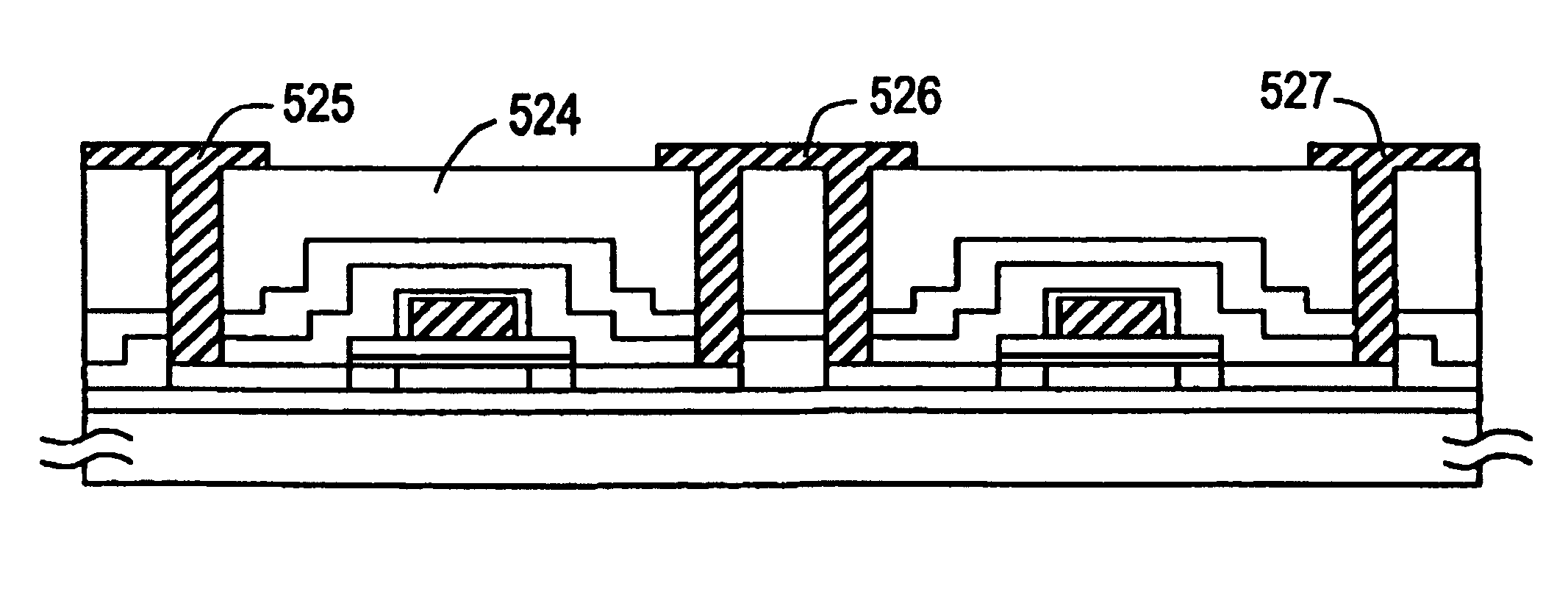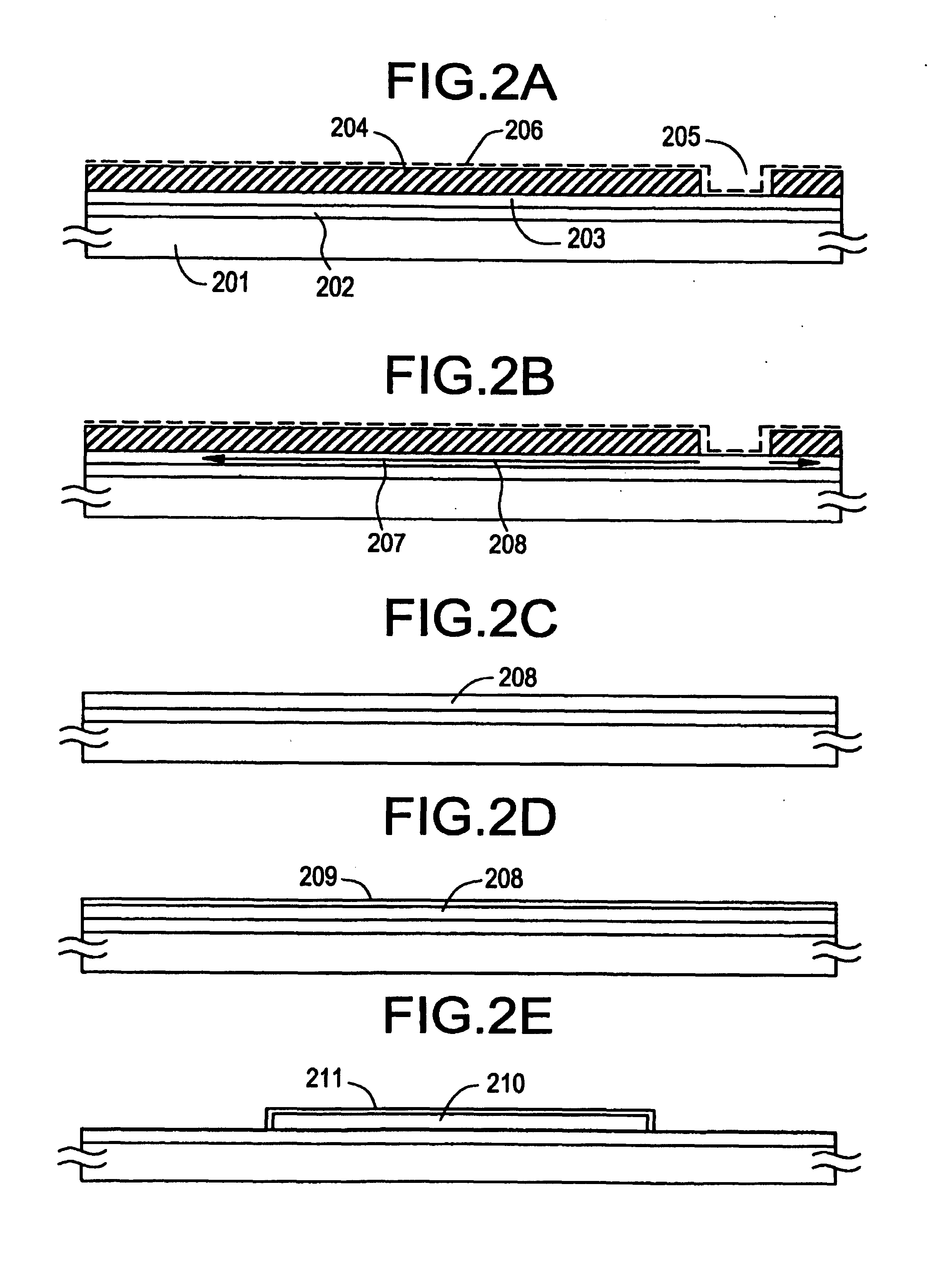Method for fabricating a semiconductor device
a semiconductor and device technology, applied in the field of semiconductor devices, can solve the problems of difficult to obtain the required crystallinity, difficult to obtain a good annealing effect across the wide area, and the irradiation of laser light is apt to become unstable, so as to promote the crystallization of silicon and reduce the concentration of metal elements
- Summary
- Abstract
- Description
- Claims
- Application Information
AI Technical Summary
Benefits of technology
Problems solved by technology
Method used
Image
Examples
first embodiment
[0044]An arrangement for obtaining a crystalline silicon film on a glass substrate by utilizing nickel element will be explained in the present embodiment.
[0045]At first, the crystalline silicon film having a high crystallinity is obtained by an action of nickel element in the present embodiment.
[0046]Then, laser light is irradiated to enhance the crystallinity of the film and to diffuse nickel element existing locally concentrated within the film. That is, the block of nickel is extinguished.
[0047]Next, a thermal oxide film containing a halogen element is formed on the crystalline silicon film by thermal oxidation. At this time, the nickel element remaining in the crystalline silicon film thus obtained is gettered to the thermal oxide film by an action of the halogen element. Because the nickel element is distributed by the irradiation of the laser light, the gettering proceeds effectively.
[0048]Then, the thermal oxide film containing the nickel element in high concentration as a r...
second embodiment
[0104]The present embodiment relates to a case when Cu is used as the metal element which promotes the crystallization of silicon in the arrangement shown in the first embodiment. In this case, cupric acetate [Cu(CH3 COO)2] or cupricchloride (CuCl2 2H2O) may be used as the solution for introducing Cu.
third embodiment
[0105]The present embodiment relates to a case of growing crystal in the form different from that in the first embodiment. That is, the present embodiment relates to a method of growing the crystal in a direction parallel to the substrate, i.e. a method called lateral growth, by utilizing the metal element which promotes crystallization of silicon.
[0106]FIG. 2 shows the fabrication process according to the present embodiment. At first, a silicon oxide nitride film is formed as an underlying film 202 in a thickness of 3000 angstrom on the Corning 1737 glass substrate (or a quartz substrate) 201.
[0107]Next, an amorphous silicon film 203 which is the starting film for a crystalline silicon film is formed in a thickness of 600 angstrom by low pressure thermal CVD. The thickness of the amorphous silicon film is preferable to be less than 2000 angstrom as described before.
[0108]It is noted that plasma CVD may be used instead of the low pressure thermal CVD.
[0109]Next, a silicon oxide film...
PUM
| Property | Measurement | Unit |
|---|---|---|
| angle | aaaaa | aaaaa |
| temperature | aaaaa | aaaaa |
| temperature | aaaaa | aaaaa |
Abstract
Description
Claims
Application Information
 Login to View More
Login to View More - R&D
- Intellectual Property
- Life Sciences
- Materials
- Tech Scout
- Unparalleled Data Quality
- Higher Quality Content
- 60% Fewer Hallucinations
Browse by: Latest US Patents, China's latest patents, Technical Efficacy Thesaurus, Application Domain, Technology Topic, Popular Technical Reports.
© 2025 PatSnap. All rights reserved.Legal|Privacy policy|Modern Slavery Act Transparency Statement|Sitemap|About US| Contact US: help@patsnap.com



